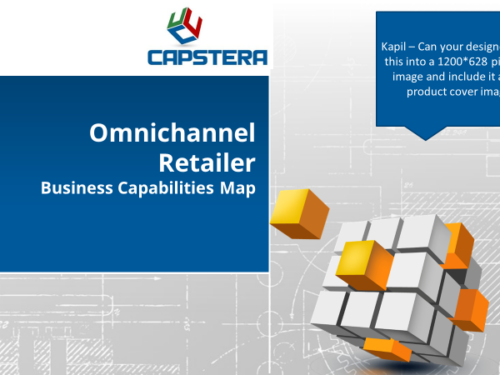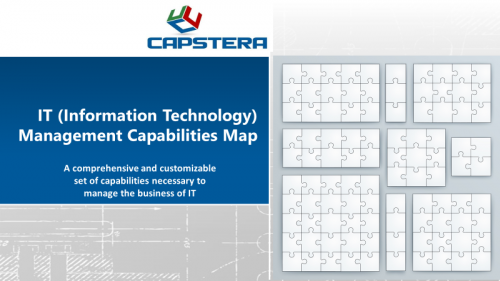Property and Casualty Insurance Business Capability Map
Price range: U.S. $999 through U.S. $2,999
The Property and Casualty Insurance Business Capabilities Map is a customizable, comprehensive, and in-depth set of business capabilities that capture the essence of what a Property and Casualty Insurance Carrier does. It will help companies gain a holistic perspective of their business at a foundational level and provide a business blueprint for many valuable purposes. The Property and Casualty Insurance capabilities map comprises about 700 capabilities across three levels.
Property and Casualty Insurance Business Capabilities Map Deliverables:
The Property and Casualty Insurance industry business capabilities model comprises ~700 capabilities across three levels and includes the following editable artifacts:
- An Excel spreadsheet with the grouping of capabilities.
- A PowerPoint format with the top three levels presented in a nested visualization.
- A Word document with capabilities in a multilevel list format.
- Capability Definitions (at Level 3)
- Capability KPIs (Key Performance Indicators) (at Level 2)
(Note: As the Property and Casualty Insurance capabilities map is a digital deliverable, we do not accept returns or issue refunds. So, please read the product description and the terms carefully before purchasing.)
Watch a P&C Insurance Capabilities Intro Video
The Property and Casualty insurance capabilities map is a set of multilevel and granular business capabilities with a primary focus on the core industry-specific value chain but also provides a decomposition of the horizontal shared services.
The Property and Casualty insurance business capabilities model is a must-have tool for business architects, enterprise architects, business and technology leaders, and project teams to fathom the nuances of the industry’s core, context, and commodity capabilities.
The Strategic Imperative for P&C Insurance Transformation:
Property and Casualty (P&C) insurance companies must transform to stay competitive and relevant in today’s rapidly changing business environment. The need for transformation arises from various factors impacting the industry, such as evolving customer expectations, technological advancements, increased competition, and regulatory changes.
Customers today demand seamless, personalized, and digital experiences. They expect insurance providers to offer tailored products, easy access to information, and instant claims processing. To meet these expectations, P&C insurers must embrace digitalization and invest in modernizing their core systems, processes, and customer touchpoints.
Technological advancements are disrupting traditional business models and transforming the insurance landscape. The rise of big data, artificial intelligence (AI), machine learning, and the Internet of Things (IoT) provide opportunities for P&C insurers to gain deeper insights into customer behavior, improve underwriting and risk management, and automate processes. Insurers that fail to adapt and leverage these technologies risk being left behind by more innovative competitors.
Increased competition from insurtech startups and non-traditional market entrants is forcing P&C insurers to rethink their strategies. These new players leverage cutting-edge technology and innovative business models to deliver superior customer experiences and challenge the incumbents’ market share. To remain competitive, traditional insurers must adopt agile methodologies, foster a culture of innovation, and explore strategic partnerships or acquisitions.
Regulatory changes and compliance requirements, such as stricter data privacy laws and climate-related risk disclosures, are adding complexity to the P&C insurance business. Insurers must be proactive in understanding and addressing these requirements while ensuring their operations remain compliant and resilient.
In summary, the P&C insurance industry is experiencing significant shifts driven by customer expectations, technological advancements, increased competition, and regulatory changes. To thrive in this dynamic environment, P&C insurers must embrace digital transformation, adopt innovative technologies, and develop new strategies to stay competitive and meet evolving market demands.
Business Capabilities are a Cornerstone for Transformation
For a P&C carrier to transform successfully, it is essential to establish a structurally strong foundation to support change and innovation over time. This is where business architecture and business capabilities come into play. Business architecture is creating a structured model, including an abstraction of its operations, functions, systems, and resources. This model can help enterprises understand how their business operates, identify inefficiencies, and develop a plan to optimize and streamline operations. In addition, by creating a clear picture of their business architecture, companies can better understand how different business units and functions interact and how changes in one business area can impact other areas.
Business capabilities encapsulate and abstract the functions, skills, and resources a company needs to execute its business strategy successfully. By defining and organizing their business capabilities, companies can identify gaps and redundancies and develop a roadmap to address them. This helps ensure the firm has the necessary resources to execute its strategy and drive innovation over time.
Business architecture and capabilities provide firms with a framework to assess and optimize their operations, reduce costs, and drive innovation. By taking a structured approach to transformation, enterprises can build a foundation capable of supporting ongoing change and adaptation and position themselves for success in a rapidly evolving industry.
(NOTE: The current product provides a comprehensive business capability model. It does not include other business architecture artifacts.)
How to Use the Property and Casualty Insurance Capabilities Map?
A business capabilities map is a fundamental and foundational deliverable in the business architecture continuum. The Capstera Property and Casualty Insurance capabilities model encapsulates end-to-end aspects of the business with a detailed, multilevel capabilities list.
There are several benefits from business capabilities, including, among others:
- Foster alignment between business and IT using capabilities as an everyday language.
- Capabilities are a structurally sound and internally coherent abstraction of business functions.
- A capability-based roadmap eliminates redundancy and replication and focuses on capability evolution.
- Juxtaposing capabilities and systems/applications provide a footprint analysis and can lead to better application portfolio rationalization decisions.
The Property and Casualty carrier business capabilities map decomposes components into three levels. Created by business architects and industry domain experts, the capabilities list is detailed, in-depth, and conforms to the construct of MECE (mutually exclusive and collectively exhaustive).
Who should use the Capabilities Matrix?
The Property and Casualty insurance business capabilities matrix is a generic model; hence, it is a starting point, not the final product. (Please note that a generic map covering multiple areas will not be specific to your specific company or business model; that is where our professional services can help customize and detail the capability model. Or you can modify and tailor it to your needs internally.) The primary users encompass:
- Business architects and enterprise architects.
- Leaders focused on business transformation.
- Product and program managers enabling capabilities.
Why Purchase a Business Capabilities Map?
Defining business capabilities from a blank slate takes time and effort and delays time to value. Instead, a pre-built and customizable business capability map helps provide 60-80% of capabilities allowing internal teams to focus on what is missing or unique to their companies.
And the cost is less than an inexpensive team dinner or the loaded cost of 4-5 team members brainstorming for an hour.
And far less than the deliverables consulting firms produce at over $100,000 or more, and compared to that number, the cost of our capabilities models is a fraction (a rounding error.)
Even if you already have a capability map, you could use our version to compare, validate, and potentially include missing capabilities.
A Note About the Artifacts:
- Business Capabilities Matrix: A functional area occupies one box in many business capability maps. Some may wonder why we decomposed the capabilities into 100X or more capabilities. We humbly submit that one box or entry in a one-page diagram is Wall Art, not an implementation tool. Decomposing capabilities into a nested list of granular items will help understand a capability’s depth, breadth, scope, and importance. It is also possible that some capabilities in our matrix may not be relevant to you. Similarly, we may have captured and documented some relevant and essential capabilities of your firm.
- Capability Definitions: We include capability definitions at Level 3. Please feel free to modify it to your company’s needs.
- Capability KPIs (Key Performance Indicators): We added a few KPIs for capabilities (mostly at Level 2) to get you started. You may not measure these KPIs in your company and have an entirely different set of metrics. Again, use them as a springboard, and not debate the applicability to your firm.
Provisos:
- We cannot accept refunds or returns as the products are digital deliverables.
- Please realize that a generic capability model may or may not be entirely applicable in some circumstances.
- We do not offer any implied or explicit warranties, and it is sold on an as-is basis.
- The sale does not include customization or implementation help.
- Please review our standard Ecommerce Store Terms and Conditions.
Need Customization Help?
Property and Casualty Insurance Business Capability Map
Price range: U.S. $999 through U.S. $2,999





